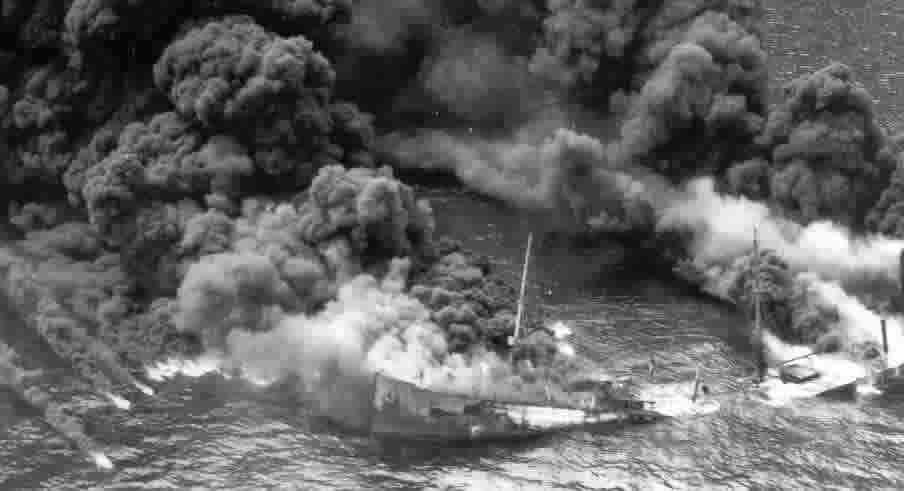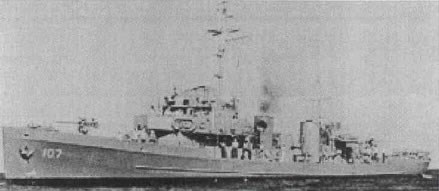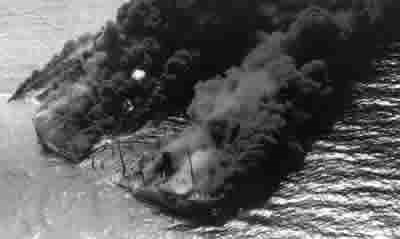
National Archives Photo Visitors to Cape Hatteras National Seashore are often surprised to learn that this tranquil setting was once an arena of death and destruction due to rampaging German U-boats. In the dark days of early 1942, enemy submarines descended upon local waters, wreaking havoc on defenseless merchant ships in full view of the Outer Banks. The pivotal naval campaign that followed, one marked by conspicuous instances of ignorance, frustration, and heroism, came perilously close to knocking the United States out of World War II. On December 7, 1941, the Japanese surprise attack on Pearl Harbor thrust the United States unexpectedly into active hostilities. It also compelled Germany's dictator, Adolf Hitler, to declare war on the U.S., which in turn brought about a secret plan, code-named Operation Paukenschlag (or "drumroll"), for a swift, decisive submarine assault on the American eastern seaboard. The strategy, conceived by Rear-Admiral Karl Donitz, the brilliant German U-boat commander, was to take advantage of poor American war preparations and strike at the vulnerable, merchant-rich sea lanes just off the Atlantic coast. Initially, only five submarines were assigned to the operation, and as they began their stealthy voyage across the Atlantic in late December, not even Admiral Donitz could foresee the success that these few U-boats would achieve. 
U.S. Naval Institute Photo To say that the United States was ill-prepared for the storm that was heading its way is a vast understatement. Naval patrol vessels assigned to the Atlantic were pitifully few in number, and those that were available were obsolete, slow, unseaworthy, or totally inappropriate for anti-submarine duty. Only one ship, the 165-foot cutter Dione, patrolled the crucial 5th Naval District - a huge section of ocean which included the waters off Cape Hatteras. Designed during Prohibition to thwart rum-runners, the Dione was a fine Coast Guard vessel. Alone against tested German U-boats, however, she was simply overmatched. Meanwhile, merchant ships came and went along the coast as they pleased, one at a time, with their running lights ablaze and often without a zig-zagging course (a defensive maneuver which made torpedo attacks more difficult). Conditions ashore were just as bad. No blackout restrictions were enforced (which meant that coastal lights provided a bright backdrop for passing ships, greatly easing enemy targeting), lighthouses and navigational buoys remained lit, proper patrol aircraft were unavailable, and, despite warnings from their concerned subordinates as well as their adamant British allies (who had broken the German naval code), the American naval command seemed oblivious to the potential for impending disaster. 
National Archives Photo Disaster came promptly, nevertheless. The U-boats, their crews seasoned by two years of war and with no American defenses to concern them, roved at will and struck with predatory precision. As a result, Allied merchant ships went down in staggering numbers: from January to June, 1942, a total of 397 ships were sunk in American-protected waters. Off the North Carolina coast, where, as the U-boat commanders realized, Cape Hatteras served as a navigational focal point, so many merchant ships were sunk that captains referred to the area as "Torpedo Junction." Flaming tankers burned so brightly off the Outer Banks that on shore, it was said, one could read a newspaper by the glow at night, while the grim flotsam of war - oil, wreckage, and corpses - was strewn across local beaches. The Germans themselves were astonished at the ease of their dominance. Yet they continued to operate with little fear of retaliation, for despite the path of destruction being forged just offshore, the U.S. Navy's response was a sluggish one. Admiral Ernest J. King, Commander in Chief of the U.S. Fleet, did not seem to recognize the serious nature of what was happening, and ignored the protests of his front-line commanders. Destroyers, vessels vital for anti-submarine duty, were deployed elsewhere or kept in port. When patrol planes became available, they were sent to other areas. The British, who were quite aware of the dire situation at hand, offered both recommendations and ships - and were rebuffed on both counts. Unchallenged, the Germans intensified their assault, and the number of sinkings continued to mount. The ongoing carnage at sea did not go completely unnoticed by the American high command. Of this "Atlantic Pearl Harbor" Army Chief of Staff George Marshall wrote on June 19, 1942, to Admiral King:
At last, the urgency of the U-boat threat began to hit home. The massive shipping losses, timely British assistance (which was finally accepted), and some hard-learned lessons provoked an effective reaction from the U.S. Navy. Long-range aircraft patrols were implemented, a coastal convoy system was initiated, and more anti-submarine vessels were deployed. A few enemy U-boats were even sunk. By the summer of 1942, the days of spectacular German success were past, and Admiral Donitz wisely withdrew his submarines to other theaters-of-operation. Though merchant ships were lost sporadically off the coast throughout the remainder of the war, nothing approached the bloodbath of early 1942. The terror of "Torpedo Junction" was over, but its crippling final toll included more than eighty sunken ships and hundreds of lives lost in the waters off North Carolina. |
Last updated: August 30, 2023
